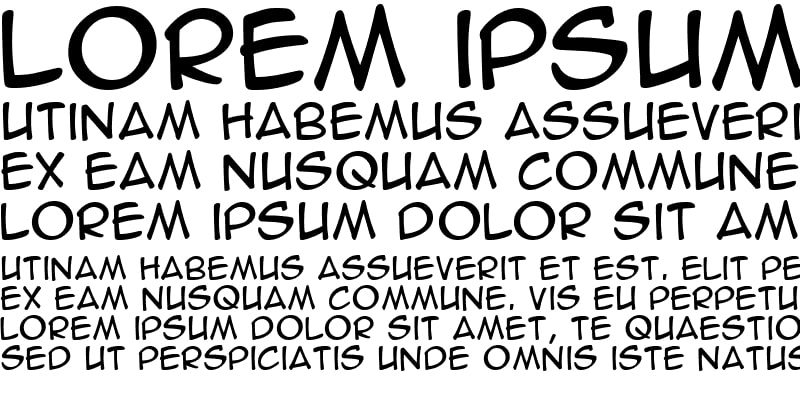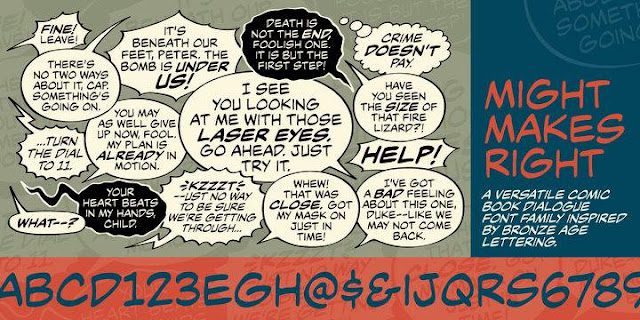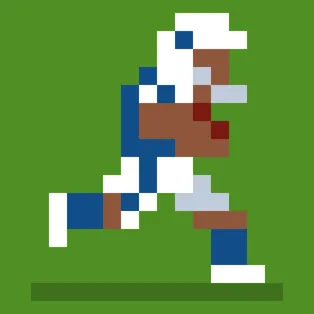Manga, the captivating art form from Japan, has gained a massive following worldwide. It’s not just the storylines or illustrations that draw readers in, but also the unique lettering and fonts that help convey emotion, atmosphere, and tone. If you’ve ever wondered about the fonts used in manga, you’re not alone.
Manga typography is an essential element that shapes the reading experience and is often overlooked by many casual readers. In this article, we’ll explore the different font styles used in manga, how they enhance storytelling, and the impact they have on the overall manga experience.
The Importance of Fonts in Manga
In manga, fonts are not just about readability; they also serve a stylistic and emotional function. The choice of font can change the tone of a scene, highlight a character’s emotions, or intensify action. Manga is a visual medium, and every detail, including the fonts, plays a role in guiding the reader’s experience. Fonts can:
- Set the mood: Light-hearted fonts can make a scene feel fun and whimsical, while bold, jagged fonts can heighten the intensity of a dramatic or action-packed moment.
- Emphasize emotions: A character’s speech can be amplified with the use of bold, italicized, or distorted fonts, helping the reader better understand the emotion behind the words.
- Distinguish characters: Different fonts are often used to differentiate characters, making it easier for the reader to identify who is speaking.
- Create atmosphere: In genres like horror or fantasy, custom fonts can evoke a sense of unease or wonder, adding to the atmosphere of the world.
So, what exactly are the fonts that appear in manga, and why are they so distinctive? Let’s explore.


Common Fonts Used in Manga
Manga fonts come in a wide variety, but they generally fall into two main categories: standard fonts and hand-drawn fonts. Each has its specific purpose and is chosen depending on the tone, genre, and style of the manga.
1. Standard Manga Fonts
These fonts are usually created digitally and are the most common type found in manga. They are clean, consistent, and easy to read, designed to ensure the reader can focus on the story without distractions. The most frequently used standard fonts include:
- Manga Master: A clean and versatile font commonly used in a variety of manga genres. It’s easy to read and maintains a simple, professional look.
- Futekiya: Popular for its sleek appearance, Futekiya is often used in shoujo manga (romance-focused manga) due to its elegance and readability.
- Manga Goku: This is another widely-used font that can be found in a variety of genres. It’s simple, but its boldness allows for strong emphasis in certain scenes.
2. Hand-Drawn Manga Fonts
Hand-drawn fonts are more artistic and stylized, often adding a personal touch to the manga. These fonts help to evoke specific emotions and contribute to the overall visual style of the manga. Some of the more notable hand-drawn fonts include:
- Kanji Calligraphy: In Japanese manga, kanji (the logographic characters used in writing) are often drawn by hand with brush strokes. These can convey a sense of authenticity and tradition, especially in historical or martial arts manga.
- Chikyu Guro: A distorted font often used in horror or dark fantasy manga, Chikyu Guro can convey a sense of chaos, tension, or fear.
- Comic Sans: While often criticized for being overused in casual settings, Comic Sans can still appear in certain manga genres. It’s most commonly used in gag or comedy scenes due to its playful, informal style.
3. Fonts for Sound Effects
Sound effects (also known as “onomatopoeia”) are a crucial aspect of manga art, and they are frequently rendered in a unique font style. These sound effects help to immerse the reader in the action, making them feel as though they are part of the story. Some sound effect fonts include:
- Kumo: Often used for background sound effects in action scenes, Kumo features sharp edges that give a sense of speed and intensity.
- Bakudan: This font is often used for explosive sound effects like “BOOM!” and “BANG!” and can be found in action-heavy or violent manga.
4. Fonts in Manhwa vs. Manga
While Japanese manga and Korean manhwa share many similarities in their visual storytelling techniques, one area where they differ is in the fonts used. Manhwa often employs fonts that are more Westernized, as it’s a product of Korean comic culture, which tends to lean more toward clean and professional font styles. In contrast, Japanese manga tends to have a wider variety of fonts, including more stylized, hand-drawn options.
Manhwa fonts often resemble Helvetica or Arial due to their sleek, modern look. While these fonts are straightforward, they still carry weight depending on how they are stylized, particularly in action or dramatic moments.
On the other hand, manga fonts can range from elaborate and artistic styles to simpler, more utilitarian ones. The art and presentation of fonts in manhwa often focus on creating an immersive reading experience in a more minimalist design, while manga leans more into creative typography.
How Fonts Impact the Reading Experience
The choice of font plays a huge role in the reader’s experience. Fonts aren’t just a tool for conveying speech; they influence how the story is perceived. Here’s how fonts can affect the reading experience:
Enhancing Visual Appeal
In manga, the combination of fonts and illustrations creates an immersive world for the reader. A well-chosen font can enhance the visual appeal of the manga and highlight key moments, making them more memorable. For example, a carefully selected font can make a battle scene feel more intense, or a tender conversation feel more intimate.
Building Character and World-Building
Fonts can also be used to help build the character of the protagonist or antagonist. For instance, a villain might have jagged, aggressive fonts, while a kind, nurturing character might speak in a softer, rounder typeface. This subtle detail allows the reader to better connect with the character’s emotions and actions.
Cultural Influence
Fonts in manga also reflect cultural influences. Traditional calligraphy fonts in Japanese manga can give a historical or cultural weight to a story. For example, samurai or feudal manga might use kanji fonts that reflect traditional brushwork to evoke the feel of ancient Japan.


Why MangaKakalot Readers Should Care About Fonts
If you’re reading manga on MangaKakalot, you may notice how the site organizes and displays text. Fonts play an essential role in the online manga reading experience by ensuring that dialogue and sound effects are presented clearly and effectively. MangaKakalot provides high-quality images and a smooth reading experience that is complemented by thoughtful font choices, whether you are reading shounen, shoujo, or manhwa.
With fonts helping to set the tone and create a seamless experience for readers, MangaKakalot strives to bring these fonts to life, enhancing your engagement with the stories you love. Understanding how fonts work in manga can enhance your appreciation of the medium, making each page turn even more exciting.
Manga fonts may seem like a minor detail, but they are essential to the overall reading experience. From setting the mood and enhancing characters to creating atmosphere and making sound effects pop, fonts are a powerful tool in the manga artist’s arsenal.
Whether you’re reading a gripping action manga, a heartwarming romance manga, or a spine-chilling horror manga, the right font can make all the difference in how you connect with the story.
So next time you dive into your favorite manga on MangaKakalot, take a moment to appreciate the fonts that help bring the story to life. Whether it’s the clean lines of a standard font or the chaotic energy of a hand-drawn effect, these fonts are more than just words—they are an integral part of the manga experience.






